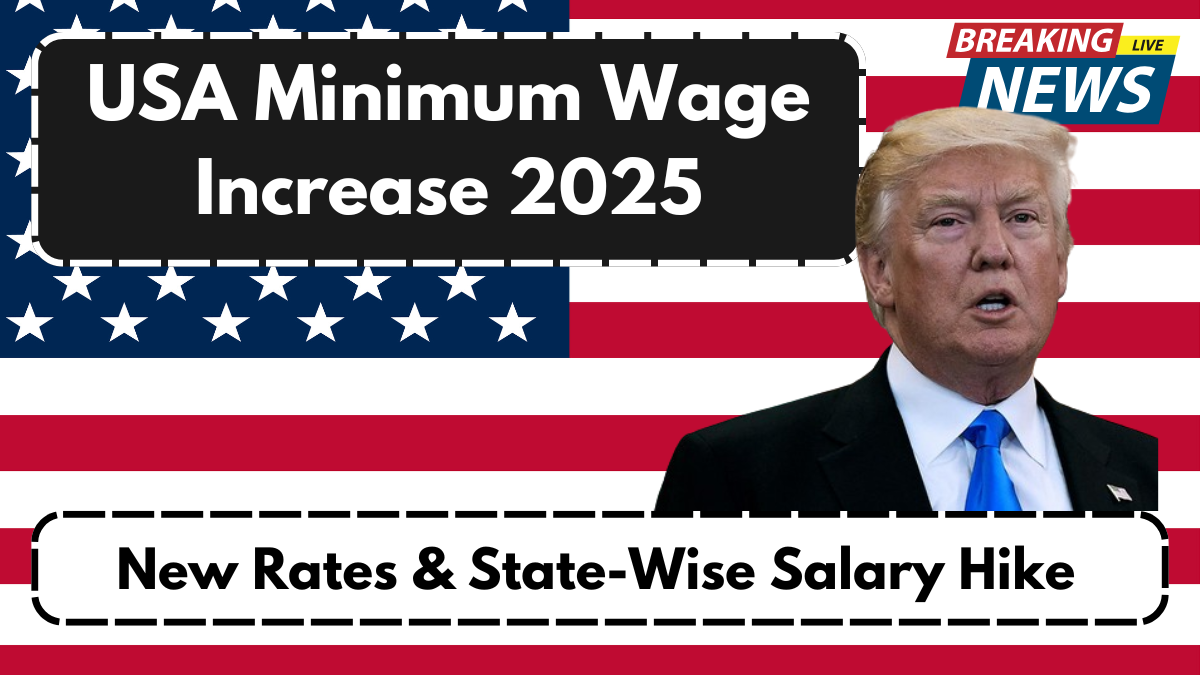The landscape of American wages is undergoing a significant transformation. The USA minimum wage increase 2025 reflects a broader push to address the growing cost of living and ensure that low-income workers see real gains in their earnings. While the federal baseline remains unchanged at $7.25 per hour, many states have enacted their own increases, creating a patchwork of wage laws across the country.
This change is driven by both legislative mandates and inflation indexing mechanisms adopted in numerous states. The focus for 2025 is not only on raising the floor but ensuring the rates adjust automatically in subsequent years.

What Are the New Wage Rates USA Workers Can Expect?
The new wage rates USA workers are seeing this July vary widely by state. Some jurisdictions are inching closer to the long-debated $20/hour mark, while others have taken modest steps forward. California, Washington, and Massachusetts continue to lead with some of the highest minimum wage thresholds in the nation.
Here’s a table summarizing key wage updates across several states:
| State | New Minimum Wage (July 2025) | Previous Wage | Notes |
|---|---|---|---|
| California | $17.50 | $16.50 | Annual CPI-based adjustment |
| New York | $17.00 | $16.00 | Includes downstate and NYC parity |
| Washington | $17.25 | $16.28 | Adjusted for inflation |
| Florida | $15.50 | $13.00 | Step toward $17 by 2026 under Amendment 2 |
| Illinois | $15.00 | $14.00 | Final phase of a five-year increase plan |
| Texas | $7.25 | $7.25 | Follows federal minimum; no state-level change |
State-Wise Salary Hike 2025: Who’s Leading the Way?
When analyzing the salary hike 2025 across states, trends become evident. States with higher costs of living and strong labor advocacy are implementing the most aggressive increases. Cities such as Seattle, San Francisco, and New York City also have separate ordinances that push wages even higher than their state-mandated levels.
In contrast, states that have opted not to enact state-specific minimums, such as Mississippi and Georgia, remain tied to the federal rate, placing more pressure on local employers to voluntarily raise pay to attract workers.
Additionally, industries like food service, hospitality, and healthcare are seeing above-average wage hikes as employers react to staffing shortages and increased demand for services.
How Does This Impact Workers and Employers?
For workers, especially those in hourly positions, the USA minimum wage increase 2025 brings immediate financial relief. Many can now afford basic expenses with less reliance on multiple jobs or government assistance. However, the real value of this increase depends on how local inflation compares to wage growth.
For employers, the challenge lies in balancing higher labor costs with operational margins. Small businesses, in particular, face pressure to either raise prices, reduce hours, or find efficiencies elsewhere. Yet, many have acknowledged that better wages are key to retaining talent in a competitive labor market.
Long-Term Economic Outlook
Economists are closely watching how these changes play out. While short-term impacts include increased consumer spending and improved worker morale, the broader effects—such as automation uptake and shifts in hiring practices—are still unfolding.
The rise in the new wage rates USA is a signal of broader labor market evolution, where minimum wage laws are increasingly seen as tools not just for fairness, but economic strategy. Some policymakers are now pushing for a standardized inflation-tied federal minimum to reduce disparities across states.
FAQ: Understanding the USA Minimum Wage Increase 2025
What is the current federal minimum wage in July 2025?
The federal minimum wage remains at $7.25 per hour, unchanged since 2009. However, many states have implemented higher standards.
Which states have the highest minimum wages in 2025?
California, Washington, and New York currently lead, with wages between $17 and $17.50 as of July 2025.
Why are some states still using the federal minimum wage?
States like Texas and Georgia have not passed legislation to increase their own minimums and default to the federal rate.
Are employers required to follow city-level wage laws?
Yes, if a city sets a higher wage than the state, employers within that city must comply with the local rate.
Will these wages continue to rise in the future?
In many states, yes. Several have adopted annual inflation adjustments or multi-year increase schedules to ensure steady growth.
Click here to know more.